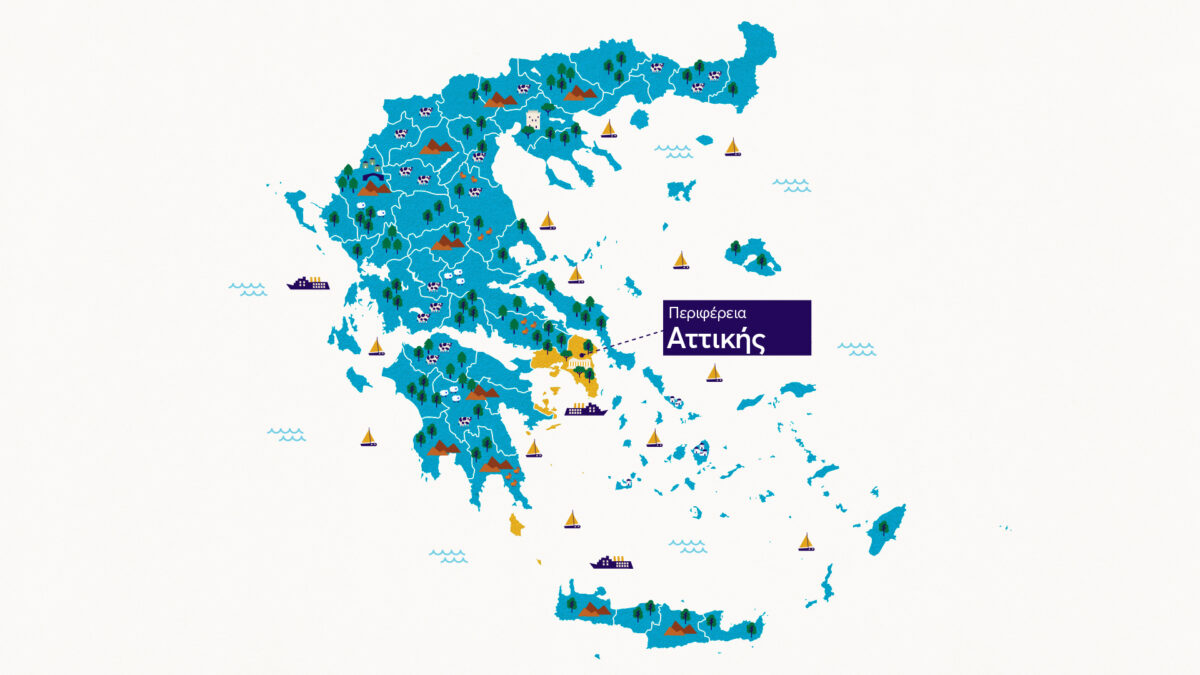The Region of Attica is Greece’s most populous and developed, home to the country’s capital, Athens, and its wider metropolitan area. Attica displays geological diversity, boasting both mountainous terrain and seaside areas.
Its northern geological boundary is formed by the Parnitha, Penteli, Imittos and Kithaironas mountain ranges, together with smaller mountains covered in lush vegetation and home to rich fauna. These are prime destinations for hiking, mountain climbing, biking as well as many other activities – where permitted and always with respect for the natural environment.
In the south, Attica’s cosmopolitan coastline extends along the Saronic Gulf, studded with gorgeous beaches and crystal-clear waters. The 70-km-long Athenian Riviera attracts both locals and tourists, and offers a host of leisure activities. Nearby are the islands of the Saronic Gulf: Hydra, Poros, Aegina, Spetses, Kea and Kythnos. Steeped in history and renowned for their striking natural beauty, these islands are ideal for day trips or even weekend getaways.
Attica has three ports: Piraeus – the country’s largest – Rafina and Lavrio. All three service an extensive network of ferry connections with the Greek islands, transporting passengers and cargo and contributing to the tourism development and overall economy of the islands.
The Region of Attica is also home to ‘Eleftherios Venizelos’ international airport, Greece’s main international airport; a key air transportation hub, it serves both international and domestic flights.
Attica was the beating heart of classical Greek civilisation. Beginning in antiquity, the land gave rise to ancient Athens, a centre of cultural, philosophical and artistic innovation and development which stands among the greatest humanity has ever produced.
Today, Attica is a ‘living museum’, boasting renowned monuments of historical and archaeological significance. Sitting atop Athens’ Acropolis, the Parthenon was dedicated to Athena, the city’s patron goddess. It is widely considered one of the most iconic examples of classical Greek architecture and has been recognised as both a world heritage site and a symbol of ancient Greek cultural heritage.
Various areas of Attica are steeped in history, having played prominent roles in antiquity. Examples include Elefsina, where the Eleusinian Mysteries were held; Sounio, with its stunning Temple of Poseidon; and Marathon.
In addition to its cultural heritage – prominently on display both in the open air and in its world-class museums, with exhibits from the Roman, Byzantine and Ottoman periods – Attica and its heart, Athens, are characterised by vibrant rhythms, with cultural and artistic events held regularly and a myriad of entertainment options catering to both locals and tourists.
Despite its high level of urbanisation, Attica is a major producer of agricultural products thanks to its mild Mediterranean climate, and many high-quality local goods are grown in its fertile soil. World-renowned local products include extra virgin olive oil from Trizina, honey from Kythira, wine from Mesogia, fruits and vegetables such as figs from Vravrona and asparagus from Methana, not to mention PDO pistachios from Aegina.
In sum, Attica is a major tourism hub for Greece, combining history, nature and modern-day life, and is an ideal destination for tourists of all categories.










